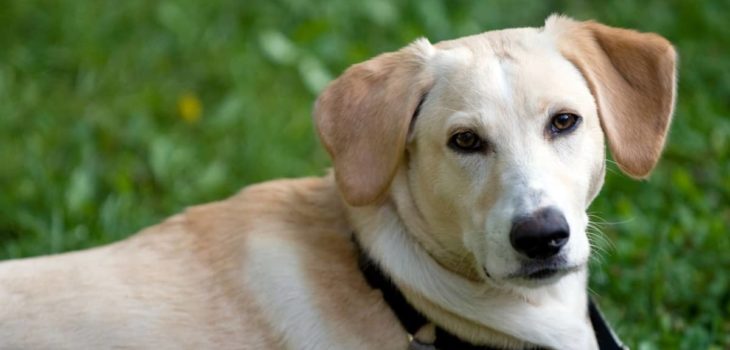The Dachsador or Doxiedor is a very peculiar and cute crossbreed. However, what is the standard dachshund lab mix size you can expect? With the two parent breeds being as different as they are, what does their cross even look like?
Dachshund Lab Mix Size
This crossbreed isn’t recognized by most major kennel clubs so there isn’t any “breed standard” to look at. However, like a crossbreed, we know that Dachsadors will fall anywhere between the size of a lab or that of a dachshund. This is a pretty wide range as Labrador Retrievers can get as heavy as 80 pounds (36 kg) and standard dachshunds can be as light as 16 pounds (7.3 kg).

Learn more about 15 Dogs That Get Along With Dachshunds
Most often, however, a standard Doxie weighs up to 32 pounds or 14 kg. And so, the expected dachshund lab mix size tends to be somewhere between 30 and 50 pounds or 14 and 23 kg. If you want a bit more detail about just how tall and heavy both labs and dachshunds can be, take a look at the following height and weight charts:
| Age | Labrador Average Height | Dachshund Average Height |
| 3 months | 10 to 15 in (25 to 38 cm) | 3 to 4 inches (7.5 to 10 cm) |
| 5 months | 12 to 18 in (30 to 46 cm) | 4 to 5 inches (10 to 13 cm) |
| 7 months | 15 to 19 in (38 to 48 cm) | 5 to 8 inches (13 to 20 cm) |
| 9 months | 20 to 23 in (51 to 58 cm) | 6 to 9 inches (15 to 23 cm) |
| 11 months | 21 to 25 in (53 to 63.5 cm) | 6 to 9 inches (15 to 23 cm) |
| 13 months | 22 to 25 in (56 to 63.5 cm) | 7 to 9 inches (17.5 to 23 cm) |
| 15 months | 22 to 25 in (56 to 63.5 cm) | 8 to 9 inches (20 to 23 cm) |
| Age | Labrador Average Weight | Dachshund Average Weight |
| 3 months | 22 to 26 lbs (10 to 12 kg) | 12 to 14 lbs (around 6 kg) |
| 5 months | 33 to 49 lbs (15 to 19 kg) | 21 to 23 lbs (around 10 kg) |
| 7 months | 51 to 59 lbs (23 to 27 kg) | 26 to 28 lbs around 12 kg) |
| 9 months | 57 to 68 lbs (26 to 31 kg) | About 30 lbs or 13.6 kg |
| 11 months | 62 to 75 lbs (28 to 34 kg) | 32 lbs or 14.5 kg |
| 13 months | 64 to 77 lbs (29 to 35 kg) | 32 lbs or 14.5 kg |
| 15 months | 64 to 80 lbs (29 to 36 kg) | 32 lbs or 14.5 kg |
Lab Mixed With Dachshund Health Details
Both parent breeds of the Dachsador are pretty healthy overall but they are not immune to health issues. Add the risk of poor breeding practices as this isn’t a purebred or recognized cross and you should watch out for the following issues:
Some of these can look scary but they are far from guaranteed assuming good breeding and proper care. To ensure the first you should always make sure that you get your dog from a reputable breeder and not from a puppy mill and/or a pet store. A good breeder will not only have to make sure to breed healthy dogs in an adequate manner but the breeder should also offer you health certificates for both the pup and its parents.
Adoption is, of course, always a great option too – just make sure to ask for the health details of the dog you’re getting. From there, it’s all a matter of good food, good exercise, and routine vet visits.
All in all, the precise dachshund lab mix size should affect the dog’s health – all that matters is if the parents were healthy and if the dogs were bred with each other properly. If you ever see a Dachsador that’s way too small, i.e. it’s been bred with a miniature dachshund, it’s probably best to avoid it. The healthiest dog breeds are those between similar-sized dogs.
FAQs
[rank_math_rich_snippet id=”s-f683bd8f-998b-43c0-b745-8dbd8ae1fc76″]




